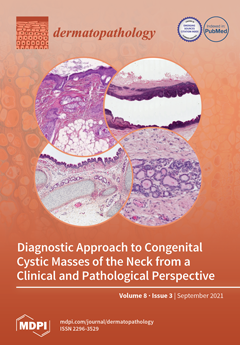Open AccessReview
Artificial Intelligence in Dermatopathology: New Insights and Perspectives
by
Gerardo Cazzato, Anna Colagrande, Antonietta Cimmino, Francesca Arezzo, Vera Loizzi, Concetta Caporusso, Marco Marangio, Caterina Foti, Paolo Romita, Lucia Lospalluti, Francesco Mazzotta, Sebastiano Cicco, Gennaro Cormio, Teresa Lettini, Leonardo Resta, Angelo Vacca and Giuseppe Ingravallo
Cited by 18 | Viewed by 4148
Abstract
In recent years, an increasing enthusiasm has been observed towards artificial intelligence and machine learning, involving different areas of medicine. Among these, although still in the embryonic stage, the dermatopathological field has also been partially involved, with the attempt to develop and train
[...] Read more.
In recent years, an increasing enthusiasm has been observed towards artificial intelligence and machine learning, involving different areas of medicine. Among these, although still in the embryonic stage, the dermatopathological field has also been partially involved, with the attempt to develop and train algorithms that could assist the pathologist in the differential diagnosis of complex melanocytic lesions. In this article, we face this new challenge of the modern era, carry out a review of the literature regarding the state of the art and try to determine promising future perspectives.
Full article
►▼
Show Figures





